Blinn House Photos by Tavo Olmos and Dennis Hill
La maison historique Blinn, un monument précieux avec son riche patrimoine et sa splendeur architecturale, est un témoignage du passé. Cependant, sa préservation et son entretien nécessitent un soutien financier substantiel. Dans un contexte moderne, ce soutien provient d’une source inattendue : les casinos en ligne. Ces plateformes numériques telles que https://topcasinosuisse.com/casinos/gamefirst/, qui proposent une myriade de jeux de hasard allant des jeux de cartes classiques aux machines à sous les plus modernes, sont devenues d’importants contributeurs à l’entretien de sites historiques tels que la Blinn House. Grâce à des partenariats et à des parrainages, les casinos en ligne injectent des fonds vitaux dans des projets de restauration, garantissant ainsi que ces joyaux culturels restent accessibles aux générations futures. La relation symbiotique entre la Blinn House et les casinos en ligne souligne l’évolution du paysage de la philanthropie et de la responsabilité des entreprises. En s’adonnant à leurs jeux favoris, les joueurs contribuent indirectement à la préservation de l’histoire, en favorisant le lien entre le passé et le présent.
A broken-arch pattern is one of the repeated themes throughout the Blinn House. It can be seen intricately incorporated into the house’s doorways, staircase railings, fireplaces, windows, light fixtures, and the four dramatically projecting bay windows from the second story.

Wisteria vines are another pattern repeated throughout the house. Gracing the outside pergolas, leaded windows, and glass tile fireplace, wisteria can be found elegantly decorating both the outside and inside of the Blinn House.

One of the Blinn House’s most dramatic and striking features is the glass fireplace. Designed featuring both the wisteria and broken-arch themes, the fireplace combines warm gold, green and brown tones to create the illusion of nature that permeates the room.
The fireplace is credited to Chicago glass artist Orlando Gianinni, who did similar work for other Maher homes.

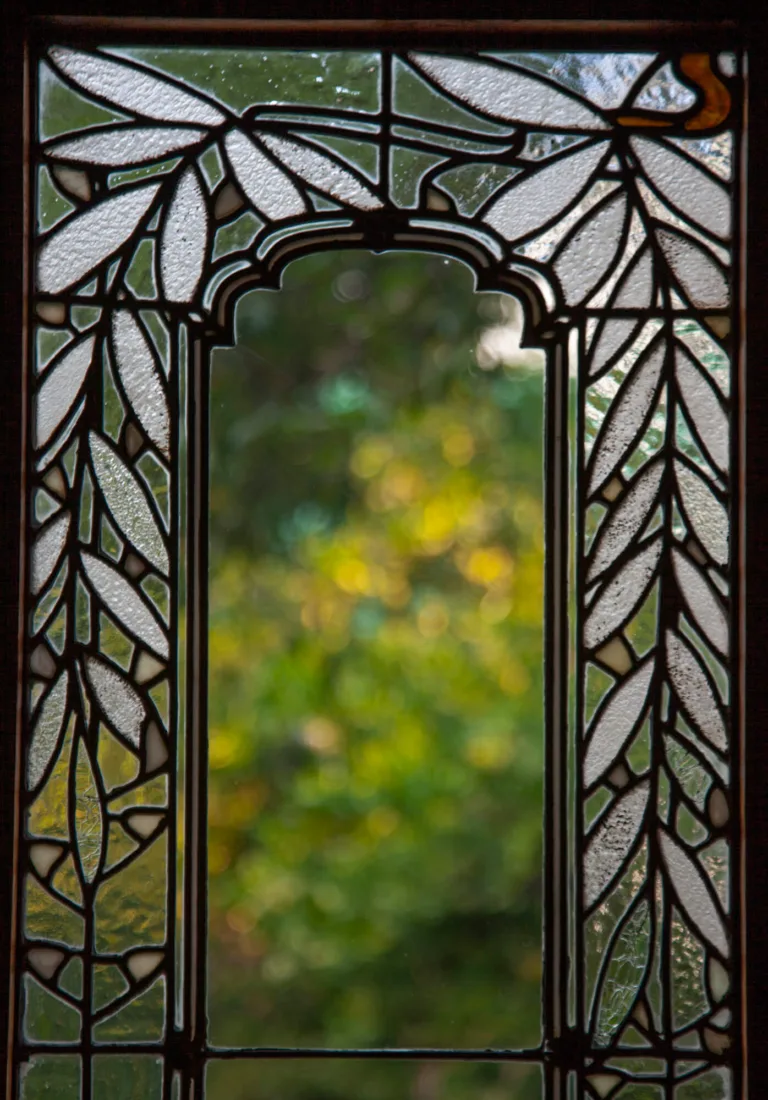
Wisteria vines are another pattern repeated throughout the house. Gracing the outside pergolas, leaded windows, and glass tile fireplace, wisteria can be found elegantly decorating both the outside and inside of the Blinn House.

One of the Blinn House’s most dramatic and striking features is the handcrafted lead glass tile fireplace. Designed featuring the artful use of both the wisteria and broken-arch themes, the fireplace combines warm gold, green and brown tones to create the illusion of nature that permeates to the space around it.
The fireplace is credited to Chicago glass artist Orlando Gianinni, who did similar work for other Maher homes.

One of the Blinn House’s most dramatic and striking features is the handcrafted glass tile fireplace. Designed featuring the artful use of both the wisteria and broken-arch themes, the fireplace combines warm gold, green and brown tones to create the illusion of nature that permeates to the space around it.
The fireplace is credited to Chicago glass artist Orlando Gianinni, who did similar work for other Maher homes.

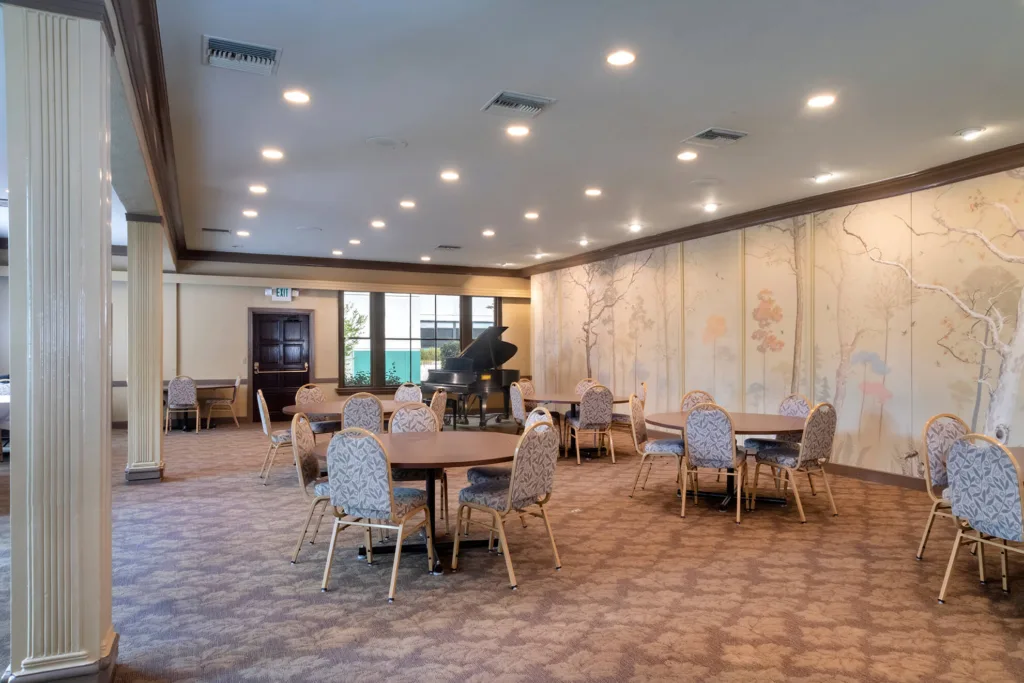
The Blinn House has the fortunate distinction of having two world-class architects design parts of the house. A later addition to the house, The Myron Hunt Room, was desisgned by famed Pasadena architect Myron Hunt (Rose Bowl, Huntington Library) and added in 1948 to accommodate the Women’s City Club of Pasadena’s meetings. The Women’s City Club purchased the house from the Blinns in 1945. The room has a wall-to-wall mural and seats up to 110 occupants.
Original to the house, detailed woodwork and paneling remains intact throughout the home.
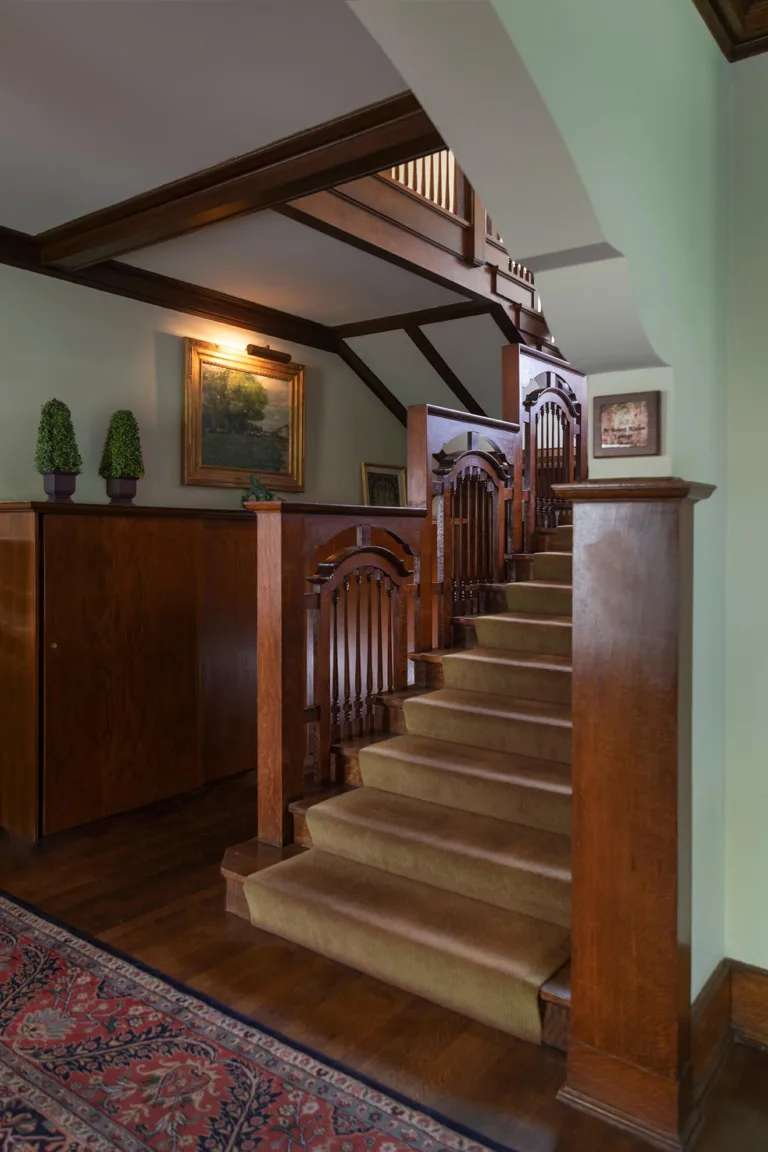
Chicago Architect George W. Maher (1864-1926), recognized as one of the finest architects of his time, is credited with the design philosophy known as the “Motif-Rhythm Theory,” whereby geometric and/or floral motifs were repeated as decorative elements throughout a structure. He is also cited, along with Frank Lloyd Wright, as a leading architect of the Prairie School, a popular Midwestern style of architecture originating in Chicago.
George Maher was born on Christmas Day in 1864 in Mill Creek, West Virginia. He started his career as a draftsman in 1883 with architects Augustus Bauer and Henry W. Hill, and in 1887 would go on to work under the tutelage of luminary architect Joseph Lyman Silsbee. While working for Silsbee, George Maher would work alongside the likes of Frank Lloyd Wright, George Grant Elmslie, and Cecil Corwin. Maher left Silsbee’s firm in 1888 to start his own private practice and went on to a successful career, becoming one of the renowned founders of the Prairie School.
The Prairie School, starting in 1890, and reaching its zenith between 1901-1915, was created to serve as a uniquely North American style of architecture in opposition to the Classical and Revival styles of architecture popular at the time, mostly as a result of the infamous Chicago World’s Fair of 1893. Prairie School buildings, as the name suggests, were designed to evoke the feeling of being in the wide open spaces of the Midwestern prairies as if the structures were growing right out of the ground. The Prairie School built upon and shared many elements of the Art and Crafts Movement such as a heavy focus on craftsmanship, the use of local natural materials and aversion to mass production.
The Blinn House sits unique among Pasadena’s many historic sites as the only known Maher residential structure built west of the Mississippi River.

The original occupants of the house, the Blinn family consisted of husband and wife Edmund and Kate Blinn and their four children. Edmund Blinn, an Oak Park, Illinois native, made his fortune in the lumber business. In line with what was becoming a increasingly popular practice for Midwesterners at the time, the Blinns enjoyed visiting Pasadena as a place of respite from the harsh Chicago winters, and in 1905 decided to jump permanently on the Midwest to western-moving bandwagon.
Planning on the Blinn House started in 1905 and construction was completed in 1906. The house was designed in similar fashion to the Bilnns’ Oak Park residence and because of its deep Chicago roots, both in architect and occupant, the Blinn House contains several features suited to withstand Midwestern winters.
The Blinn Family occupied the house from its construction in 1906 until it was purchased by the Women’s City Club of Pasadena in 1945.

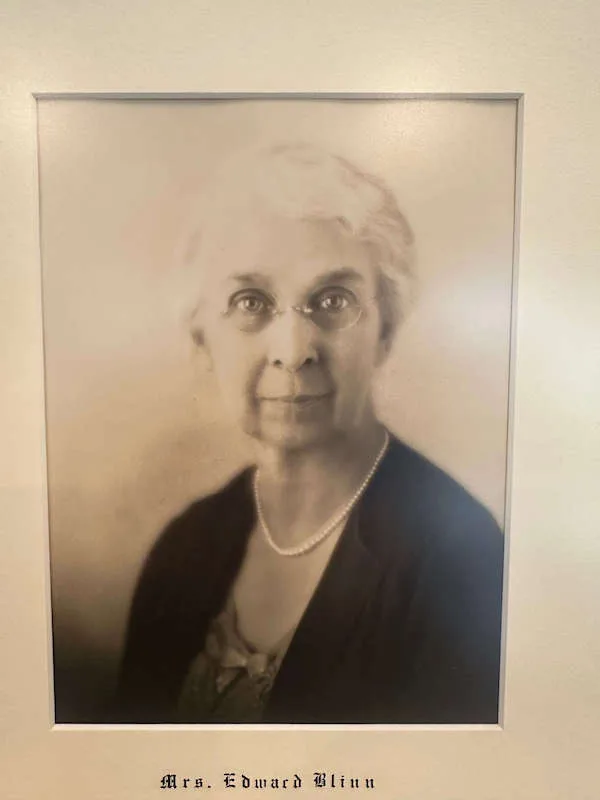
The Women’s City Club of Pasadena was founded in 1945 as a social club for women and a center for women’s organizations and other civic groups. The Blinn House served as the Club’s headquarters since their inception. The home was acquired by the Club, with support from philanthropist Gloria Crane Gartz, to provide a comfortable, elegant place for women to meet, socialize and work together on various community projects. Over its many years, the Women’s City Club welcomed thousands of members, guests, and visitors and hosted scores of memorable events.
In 2020, after more than 75 years of service to its members and the Pasadena community, the Women’s City Club of Pasadena decided to dissolve and transfer the ownership of the Edmund Blinn House to Pasadena Heritage in 2021.
The Women’s City Club’s devotion to the Blinn House’s use as a community meeting space has endured under the Blinn House’s new ownership with more than twenty community groups that used the house for regular meeting space during their tenure still continuing to meet at the Blinn House.

In May of 2020, members of the Women’s City Club voted to dissolve the Club. In accordance with its founding mission and bylaws, members chose to transfer ownership of the Blinn House to Pasadena Heritage, which had a long and mutually supportive relationship with the Club and whose mission closely aligned. Arrangements for the ownership transfer were completed in March of 2021.
Pasadena Heritage, founded in 1977, is well known and respected as an effective community organization. Our mission, to preserve and protect Pasadena’s architectural and cultural resources through advocacy and education, dovetailed perfectly with the stewardship of the Blinn House. Pasadena Heritage completed several major rehabilitation projects, including electrical and plumbing repairs and upgrades, replacement of aging HVAC systems, adding insulation, and installation of a new roof. The organization moved its offices to the Blinn House in May of 2022, once restoration was complete.

Working for many months to navigate the details of this arrangement, Board Chair Brian Baker and Executive Director Sue Mossman devoted extraordinary time and effort to the project, assisted by Board and staff members, advisors and experts. The organization is especially grateful to William W. Ellinger III, historic architect, for his countless hours of work and his expertise throughout the process, Preferred Bank and Senior Vice President Nancy Pepper for working with us to arrange financing, and to the firm Gibson, Dunn & Crutcher LLP and attorney Mehdi Eddebbarh for providing legal services for this complicated transaction. Len Schautal, Jr. and Zemrus Escrow are also due thanks for their professional services and assistance.
The Blinn House Foundation, a separate non-profit organization founded in 2002 to raise funds and oversee the historic integrity of the Blinn House, was also a critical part of the transition process. The Foundation remains in place, and its signature event, the Dr. Robert Winter Award which has recognized leadership in preservation since 2004, continues to be held at the Blinn House.
The acquisition of the Blinn House is an honor and a privilege for Pasadena Heritage, and we are very grateful to the Women’s City Club for entrusting us with their historic home.
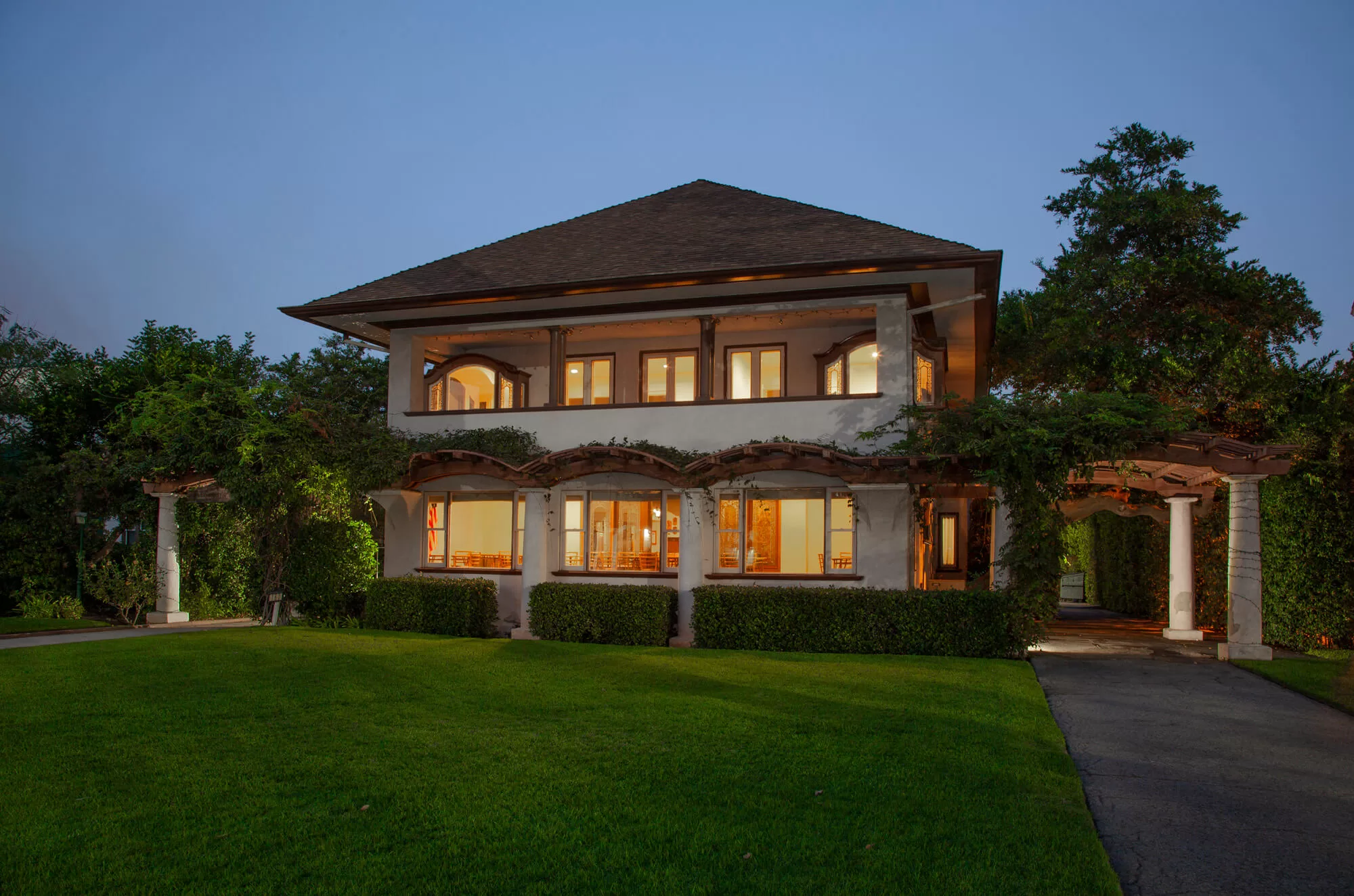

The Blinn House has been the meeting place for membership-based organizations since the 1940s. Pasadena Heritage continues this legacy into the present day by offering the home for public usage. It is available for business meetings, group meetings, receptions, mixers, holiday parties, and more.

Designed by acclaimed Pasadena architect Myron Hunt (The Rose Bowl, The Huntington Library), this impressive space offers an up-to-date audio system with built-in speakers throughout the room, making it a perfectly functional space for group meetings and lectures. A large screen and projector are also available for use. This substantially sized room can comfortably accommodate up to 110 guests, making it the perfect space to accommodate your specific event and meeting needs.
 This enclosed sunroom is the perfect space for your more intimate events. With a maximum capacity of 20 guests this beautiful room will suit the needs of any small group. Branching off from the Blinn House’s formal living room you are offered a full view of the historic charm of the Blinn House on one side and the Ford Historic District on the other. The vintage 1940’s furniture can be easily arranged to suit your next meeting.
This enclosed sunroom is the perfect space for your more intimate events. With a maximum capacity of 20 guests this beautiful room will suit the needs of any small group. Branching off from the Blinn House’s formal living room you are offered a full view of the historic charm of the Blinn House on one side and the Ford Historic District on the other. The vintage 1940’s furniture can be easily arranged to suit your next meeting.
 The perfect historical setting for any event, large or small. Reserving the Blinn House’s first floor provides you with access to the spacious Myron Hunt Dining Room, the formal living room, the private library, and the airy Garden Room. With a capacity of 160, you have plenty of room to spread out and be comfortable with your guests in this unique historic seeting.
The perfect historical setting for any event, large or small. Reserving the Blinn House’s first floor provides you with access to the spacious Myron Hunt Dining Room, the formal living room, the private library, and the airy Garden Room. With a capacity of 160, you have plenty of room to spread out and be comfortable with your guests in this unique historic seeting.
Please fill out a brief description of your event and we will get back to you as soon as possible.